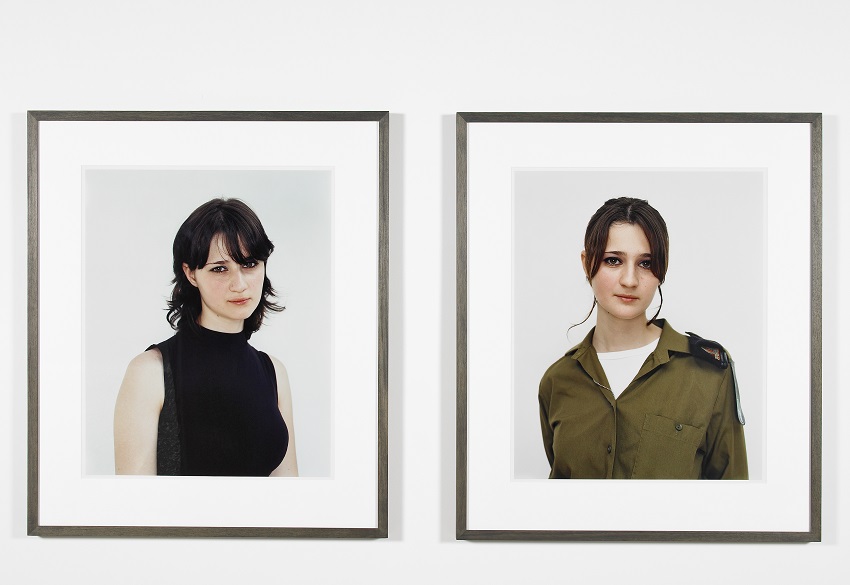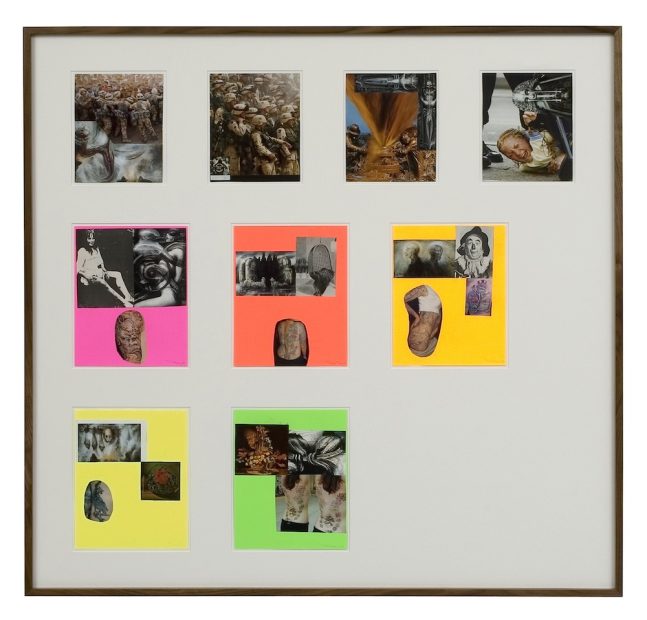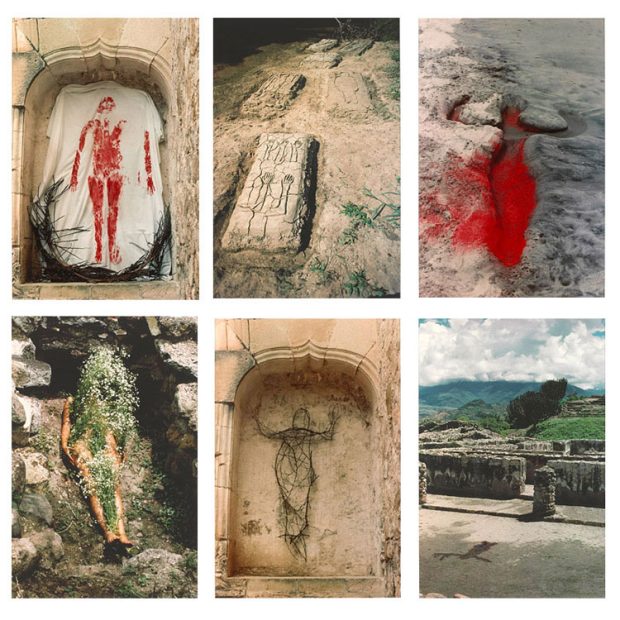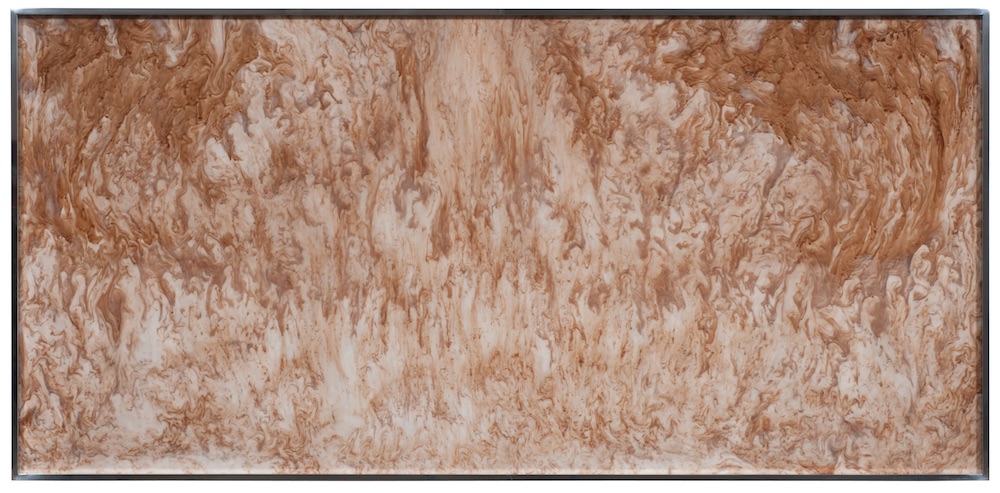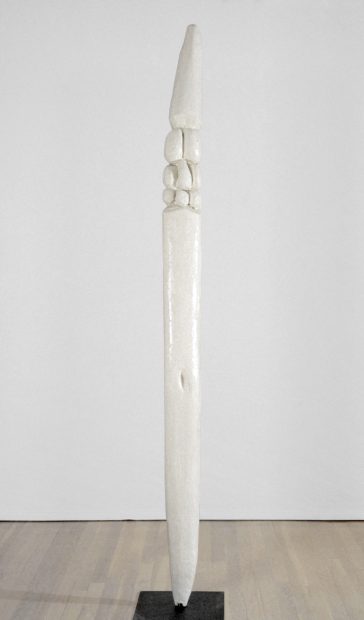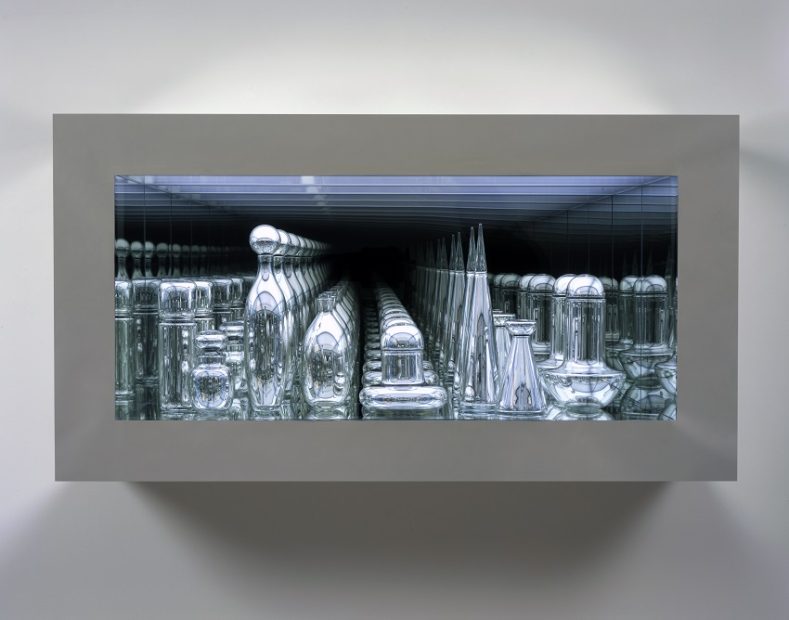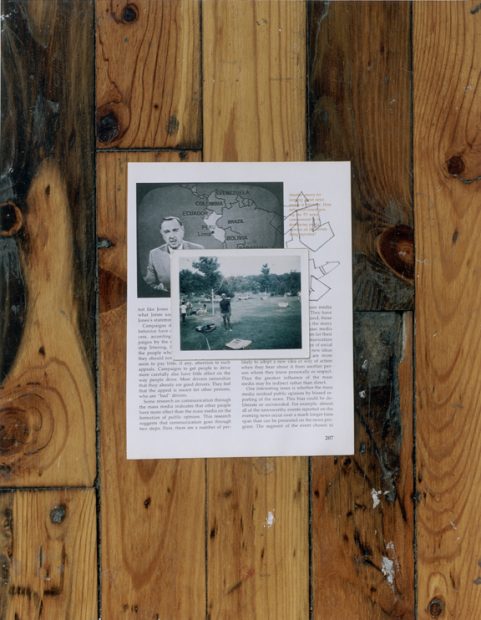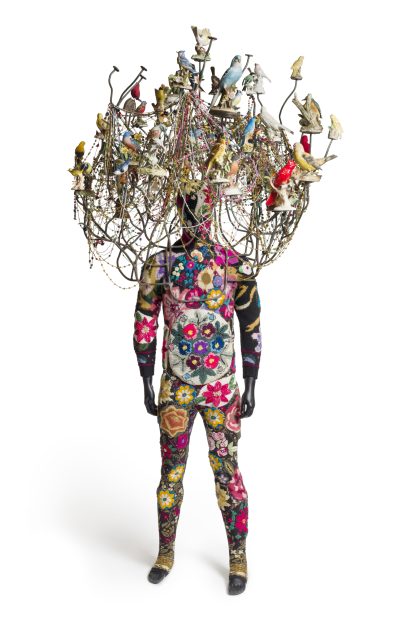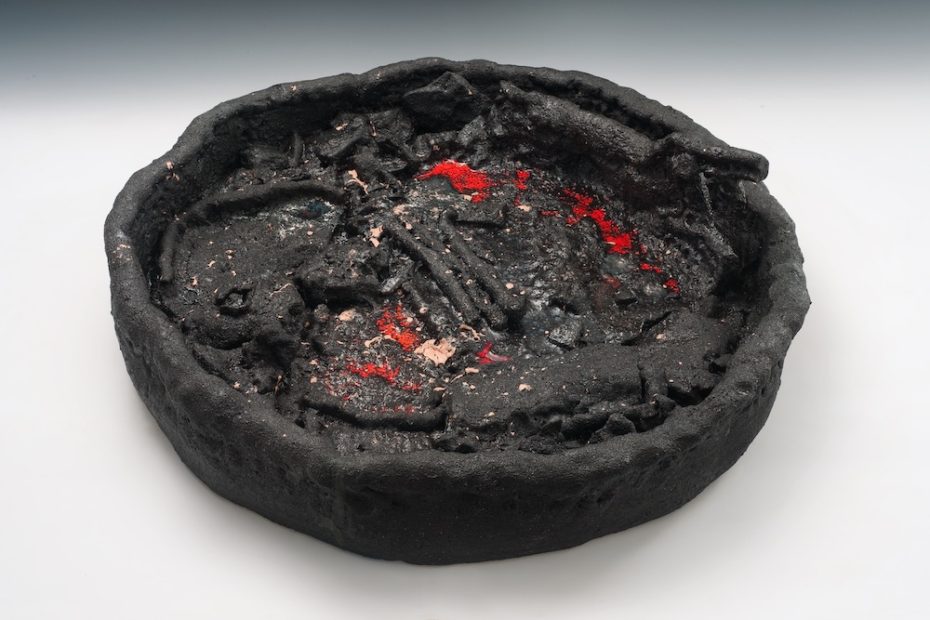Dressed in a bright yellow shirt, a plaster of sticky sweat, and a ripe, feral excitement to revisit a museum, I entered the ICA at 12 PM on a Thursday in the middle of August. I wandered, waited. I was the only one in line. The only one in the bathroom. The only one on the stairs. And when I had mastered the fourth flight, I suddenly realized, wheezing, with a touch of embarrassment, that except for the Visitor Assistants, I was entirely alone.
In a lull, everything is amplified. As I walked through the galleries, the jangling of my keys sounded like sixty bells played by the tone-deaf; the clanging of a few loose nickels, like a penny piñata; and the merciless crinkling of my KIND bar wrapper, a personal purgatory. When I cracked my knuckles, it echoed. I felt like an elephant dancing in a jewelry shop.
A flurry of motion, trapped in sudden stillness.
In this way I would describe Sterling Ruby’s Alabaster SR08-2. Ruby is an artist of multitudes, frequently creating works that transcend medium, demonstrating a clear adroitness in work with wood, urethane, clay, dye, cast acrylic, felt, fabric, and so on, constructing mammoth sculptures, hanging mobiles, canvas works, and multitudes of other forms. And yet, one common thread ties his work together: tension. The contradiction that inevitably exists when an action, an idea, is caught between the fluid and solid, motion and stillness.
His Alabaster works resemble two liquids intermingling, SR08-2 reminiscent of milk dissolving into coffee, trapped in the moment just before diffusion. SCXV3ST/BD can be seen as a macabre drop of blood, dripping, arrested eternally in the moment prior to its splatter and spread. Even the work BC (5289) seems to encapsulate the crashing of a wave, captured just before its subsequent recoil into the water.
After the exhibit, I slinked back down the steps, staring frog-eyed at the closed doors, the empty halls. Somehow, the feeling of entrapment between mobility and stasis in Sterling’s work encapsulates the reopening of our museum, our city, perfectly. As if, slowly, and unpredictably, we are caught in time, trying our best to return to normalcy during COVID-19: motionless as our lives are put on pause, and simultaneously, tentatively kinetic as stores reopen, restaurants bustle, and even museums, the ones we know so well, so different today with their masks and sanitizers, and yet so constant, challenging and art-holding, make space for us, too.
It will all keep moving, SR08-2 reminds us, even if we are caught in this moment, just for now.
Naomi Mirny is a recent Brookline High School graduate and a former member of the ICA Teen Arts Council. She is currently studying English at McGill University and hopes to continue to mindfully engage with artwork and art institutions in Montreal.
Friday Art Notes are personal reflections on works of art shown or in the permanent collection of the ICA, written by ICA staff, volunteers, and supporters. Read more
